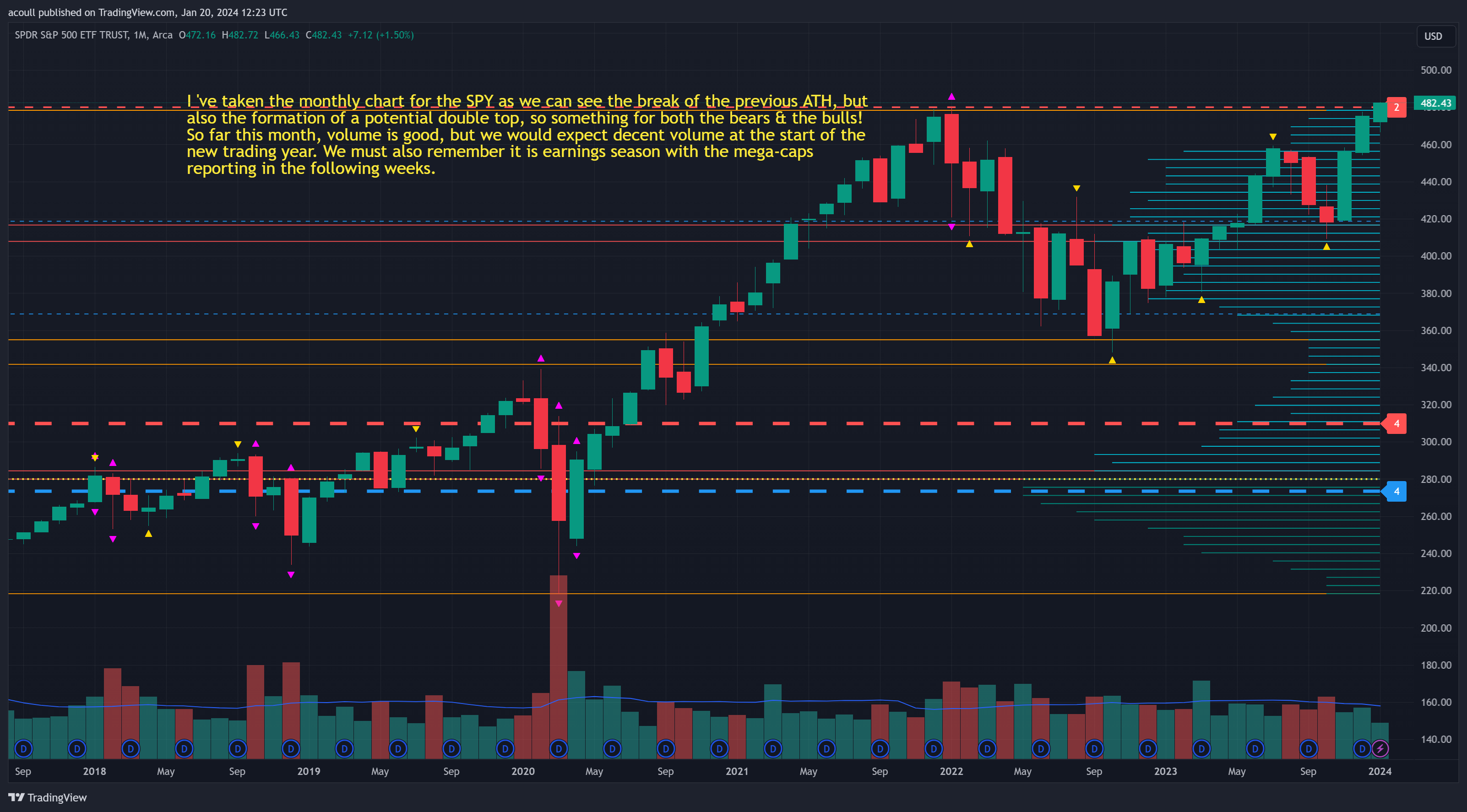A very Happy New Trading Year, one that started in a bit of a downbeat mood but led to the S&P 500 & associated SPY finally achieving a new ATH last Friday.
For those of you who follow me on X or have watched some of my webinars and recent interviews, you will know I have been saying that the index has been stretching toward that ATH since the reversal in October 2023, unlike its sister index, the Nasdaq 100, and by extension the QQQ which achieved this milestone in December. The drive higher in both indices has been tech and communication services plus, to some extent, consumer cyclical. But once we understand how the indices (and their respective ETFs) are constructed, we can see why markets appear so strong.
The drive higher in both indices has been tech and communication services plus, to some extent, consumer cyclical. But once we understand how the indices (and their respective ETFs) are constructed, we can see why markets appear so strong.
As explained in previous posts and covered in great detail in our Stock Trading & Investing Program, which is due to launch in the coming days both the S&P 500 & Nasdaq 100 as market cap indices are dominated by the biggest companies. To the extent that in the S&P 500, the top 6 carry a 25% weight, while in the Nasdaq 100, the top 6 companies constitute a 30% weight.
The net effect is that these companies will drive momentum into the index in good times, while in more difficult times, at least cushion any severe correction. We saw this in the 2022 selloff and the subsequent recovery in 2023, which AI drove.
Yesterday’s weekly close for the S&P 500 was interesting as the only sectors to end higher on the week were Tech and Communication Services; all the others were either flat or in the red. So what does this tell us about the markets?
- First, index performance is distorted, and any bullish moves are restricted to a small number of mega-cap companies.
- Second, the feel-good headlines generated by these two indices at their respective ATH feed into a narrative that all is well with the US economy when that might not be true.
- Third, we must consider other indices, such as the Russell 2000, for a broader sentiment view.
Again, those of you who follow me on X will know I like to watch the IWM (the EFT for the Russell 2000), which recently broke out of a long congestion phase but has recently retraced back. The consensus view (and my own) is that a strong economic recovery has to include the more speculative small-cap stocks.
As a trader, it matters not because all we are looking for is a trading opportunity, but it is extremely tricky for investors, particularly if they did not buy into the AI bull move early in 2023.
Against the current backdrop, we must also factor in this year’s Presidential election. From a cyclical perspective, stocks do tend to be positive in the run-up to the election, although more volatile, and it’s also a matter of watching both the US Treasury, in terms of bond issuance to finance spending, and what the FED is doing in terms of interest rates. At the moment, there does seem to be a very cozy relationship between the two, with some commentators suggesting it is too ‘cozy.’ So some interesting times ahead.
Finally, whatever happens, as volume price analysis traders and investors, the truth is in the charts.
